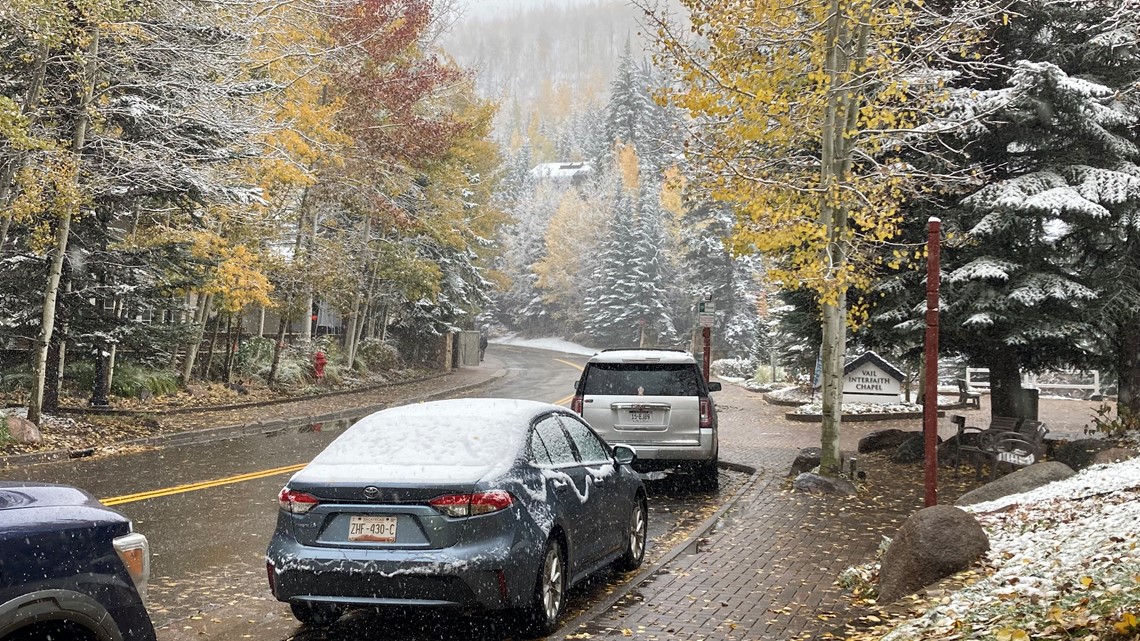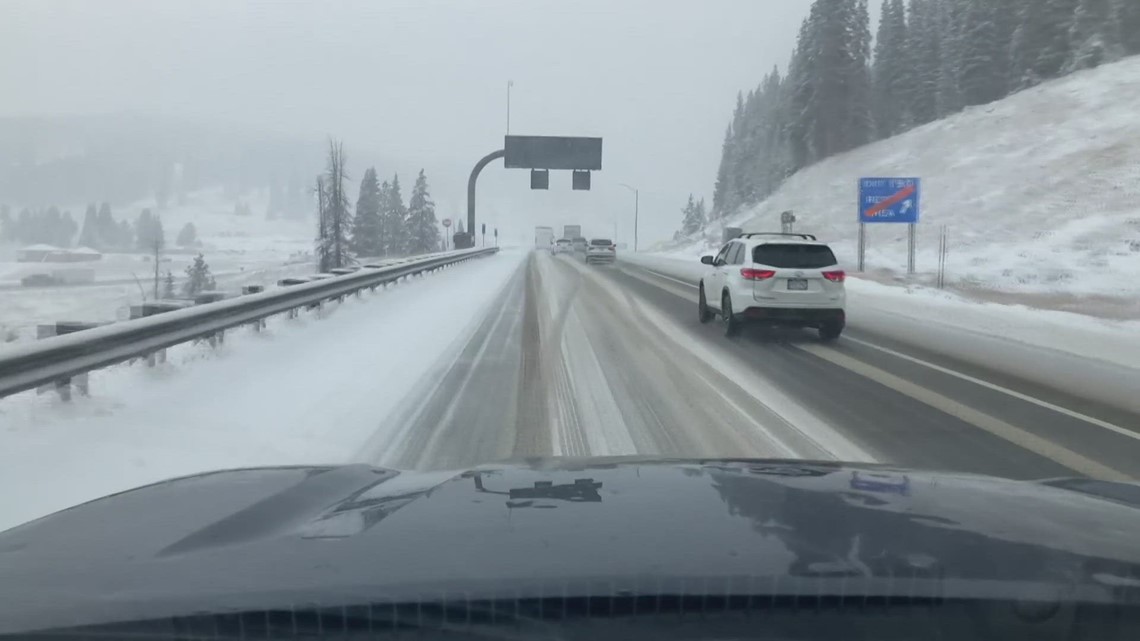WINTER PARK, Colo. — The first significant snowstorm of the season moved into the Colorado high country on Wednesday, and 4 to 10 inches of snow was reported on some peaks and ski resorts by Thursday morning.
There was also some snow between 9,000 and 10,000 feet, which means many of the mountain towns like Winter Park, Dillon, and Vail got the first measurable snow accumulation of the season.
There was a report from Crested Butte of 6 inches, which was the most by 7am. Typically, snow is only measured once per day just before the sun gets high enough in the sky to cause melting. It did snow all day Thursday, so the totals will be larger by Friday morning.


Only unofficial citizen measurements have been submitted on Thursday. The official numbers come from trained National Weather Service cooperative observers and should be published on Friday morning.
And for most towns this is just a few days later than average, but it’s a faster start than last season. Dillon, for instance, didn’t get that first snow until Oct. 24 last year.
And so, the race is on to see which town ends up with the most snow this season. Usually it’s a two-town race between Winter Park and Steamboat. Winter Park had been the champs for three consecutive years, but Steamboat Springs stepped up with 266 inches of snow last year to be our state’s snowiest town.




And we’ll be watching the El Nino weather pattern this winter because towns in the southwest like Telluride, Silverton, and Ouray usually do get big snow. The last time a town other than Winter Park or Steamboat Springs was the snowiest in Colorado was in 2016-17 when Silverton won the title.
However, that was not an El Niño season. It started out as a weak La Niña and transitioned to neutral conditions during the winter.
SUGGESTED VIDEOS: Colorado Climate

